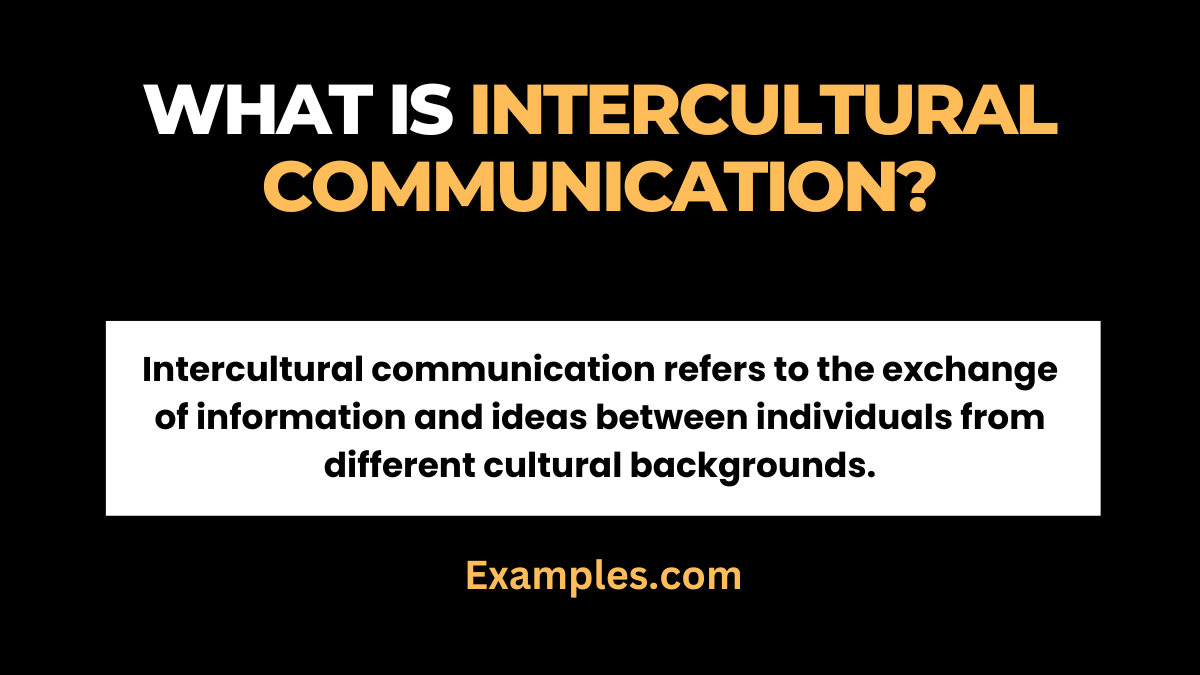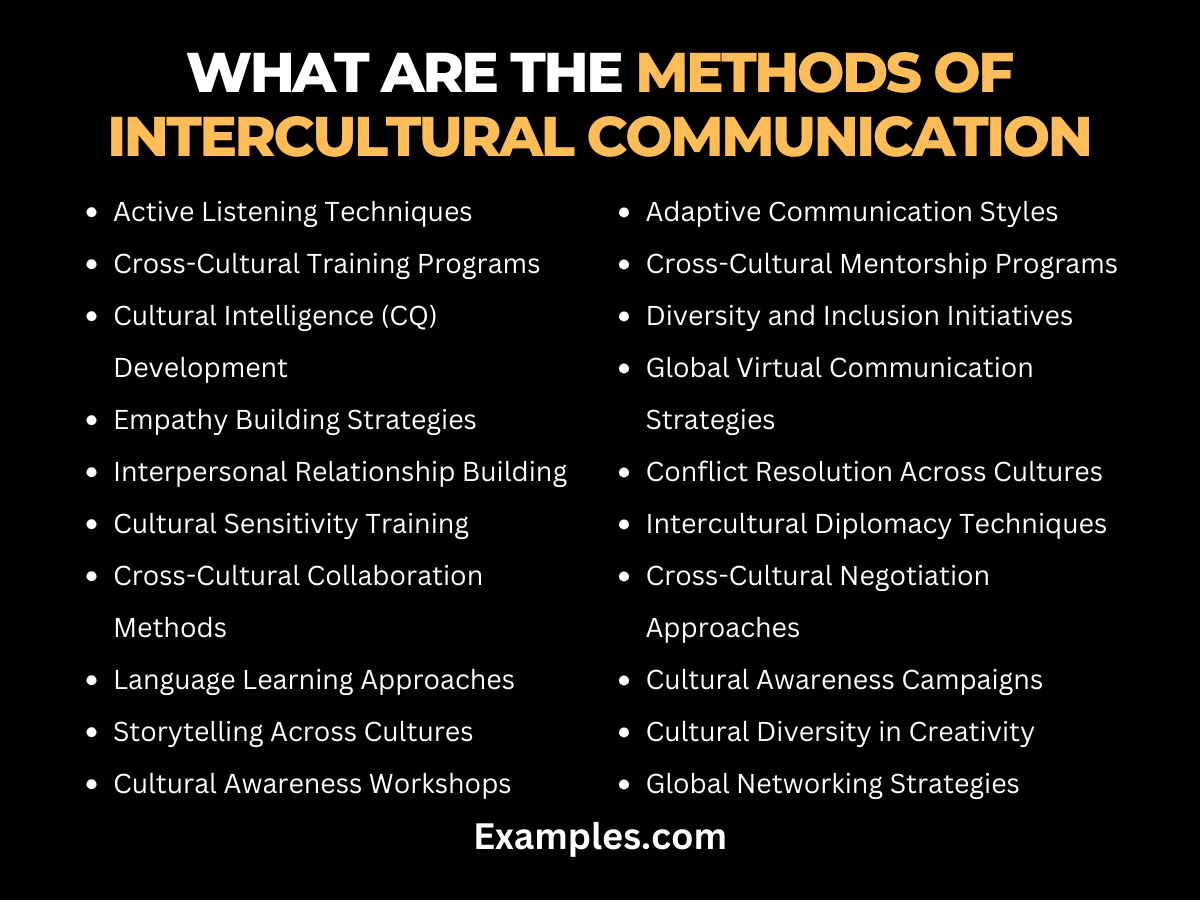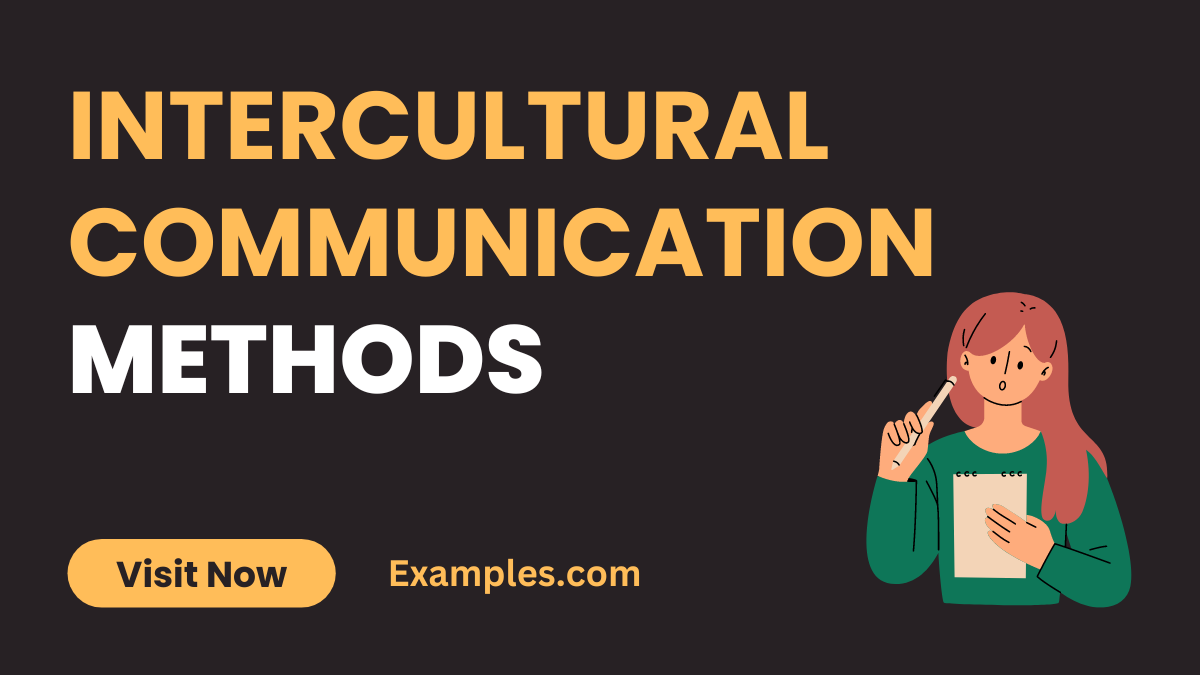20 Intercultural Communication Methods Examples
Embark on a comprehensive journey through the intricacies of intercultural communication methods in this enriching guide. Delve into diverse strategies, practical communication examples, and expert insights to foster understanding across cultures. Learn how to navigate the complexities of global interactions, enhance your cultural intelligence, and become a skilled communicator in an interconnected world. Elevate your cross-cultural proficiency and embrace the transformative power of effective intercultural communication.
What is Intercultural Communication

Intercultural communication refers to the exchange of information and ideas between individuals from different cultural backgrounds. It involves navigating diverse linguistic, social, and behavioural norms to foster understanding and effective interaction. In essence, it’s the bridge that connects people from various cultures, promoting mutual respect, shared meanings, and the ability to collaborate across global contexts. Successful intercultural communication requires sensitivity, adaptability, and an appreciation for the rich tapestry of cultural diversity.
Intercultural Communication Methods in Education
Transform educational settings into inclusive spaces by employing effective intercultural communication methods. These strategies promote understanding, respect, and collaboration among students from diverse cultural backgrounds. Create an enriching learning experience that prepares students for a globalized world.
- Cultural Exchange Programs: Facilitate programs that enable students to immerse themselves in different cultural contexts.
- Inclusive Curriculum Design: Integrate diverse perspectives into the curriculum to reflect global experiences.
- Multilingual Education Initiatives: Support language diversity in education to cater to students with various language backgrounds.
- Cross-Cultural Awareness Courses: Offer courses that enhance students’ understanding of cultural differences and similarities.
- Global Collaborative Projects: Engage students in projects that require collaboration with peers from diverse cultural backgrounds.
Intercultural Communication Methods in the Workplace
Enhance workplace harmony with effective intercultural communication methods. From fostering inclusive team dynamics to addressing cultural conflicts, these strategies create a supportive environment. Embrace cultural diversity, promote collaboration, and cultivate a workplace where everyone’s unique contributions are valued.
- Inclusive Team Building: Facilitate activities that celebrate diverse talents, fostering a sense of belonging.
- Cross-Cultural Leadership Training: Equip leaders with skills to manage diverse teams effectively.
- Cultural Competency Workshops: Provide interactive sessions to enhance employees’ understanding of different cultures.
- Diverse Communication Platforms: Implement varied communication channels to accommodate different preferences.
- Global Virtual Collaboration Tools: Utilize technology for seamless communication among geographically dispersed teams.
What Are The Methods of Intercultural Communication
Navigating the intricacies of intercultural communication requires a nuanced approach. Explore various methods designed to foster understanding, respect, and effective communication across diverse cultural contexts. From active listening to cross-cultural training, each method plays a crucial role in breaking down barriers and building connections in a globalized world.

- Active Listening Techniques: Embrace the art of active listening to understand cultural nuances, perspectives, and emotions, fostering meaningful intercultural connections.
- Cross-Cultural Training Programs: Equip individuals with the skills and knowledge needed to navigate cultural diversity, promoting effective communication in diverse settings.
- Cultural Intelligence (CQ) Development: Foster cultural intelligence to adapt and thrive in intercultural interactions, encouraging individuals to embrace diverse worldviews.
- Empathy Building Strategies: Cultivate empathy as a fundamental skill to bridge cultural gaps, fostering a deeper understanding of others’ perspectives and experiences.
- Interpersonal Relationship Building: Build authentic connections by recognizing and appreciating cultural differences, nurturing relationships that transcend cultural boundaries.
- Cultural Sensitivity Training: Develop cultural sensitivity through training initiatives, promoting awareness and respect for diverse cultural norms.
- Cross-Cultural Collaboration Methods: Facilitate collaboration between individuals from different cultures, encouraging the exchange of ideas and perspectives.
- Language Learning Approaches: Acquire language skills relevant to intercultural communication, enabling effective interaction in diverse linguistic contexts.
- Storytelling Across Cultures: Utilize storytelling as a powerful tool to convey ideas, values, and experiences across diverse cultural backgrounds.
- Cultural Awareness Workshops: Conduct workshops that educate participants on cultural differences, encouraging open dialogue and mutual understanding.
- Adaptive Communication Styles: Tailor communication approaches to align with the cultural preferences of diverse audiences, ensuring effective and respectful interaction.
- Cross-Cultural Mentorship Programs: Pair individuals from different cultural backgrounds for mutual learning, support, and the exchange of valuable insights.
- Diversity and Inclusion Initiatives: Integrate diversity into organizational policies and practices, fostering an inclusive culture that values and celebrates differences.
- Global Virtual Communication Strategies: Leverage technology to facilitate communication in virtual environments with global teams, overcoming geographical barriers.
- Conflict Resolution Across Cultures: Develop strategies for addressing and resolving conflicts that may arise due to cultural differences, promoting harmony in diverse teams.
- Intercultural Diplomacy Techniques: Navigate international relations with diplomatic strategies that respect and accommodate diverse cultural norms.
- Cross-Cultural Negotiation Approaches: Adapt negotiation styles to align with the cultural expectations and values of parties involved, ensuring successful negotiations.
- Cultural Awareness Campaigns: Launch initiatives that promote cultural awareness, encouraging appreciation for diversity within communities and organizations.
- Cultural Diversity in Creativity: Encourage diverse perspectives in creative processes, fostering innovation and inclusivity across cultural boundaries.
- Global Networking Strategies: Cultivate professional relationships on a global scale, considering cultural nuances and building a diverse network.
In conclusion, mastering various intercultural communication methods is pivotal for navigating our interconnected world. From active listening to cross-cultural training, these strategies foster understanding and build bridges across diverse cultural landscapes. By embracing these methods, individuals and organizations can cultivate meaningful connections, promote inclusivity, and thrive in the global community.



